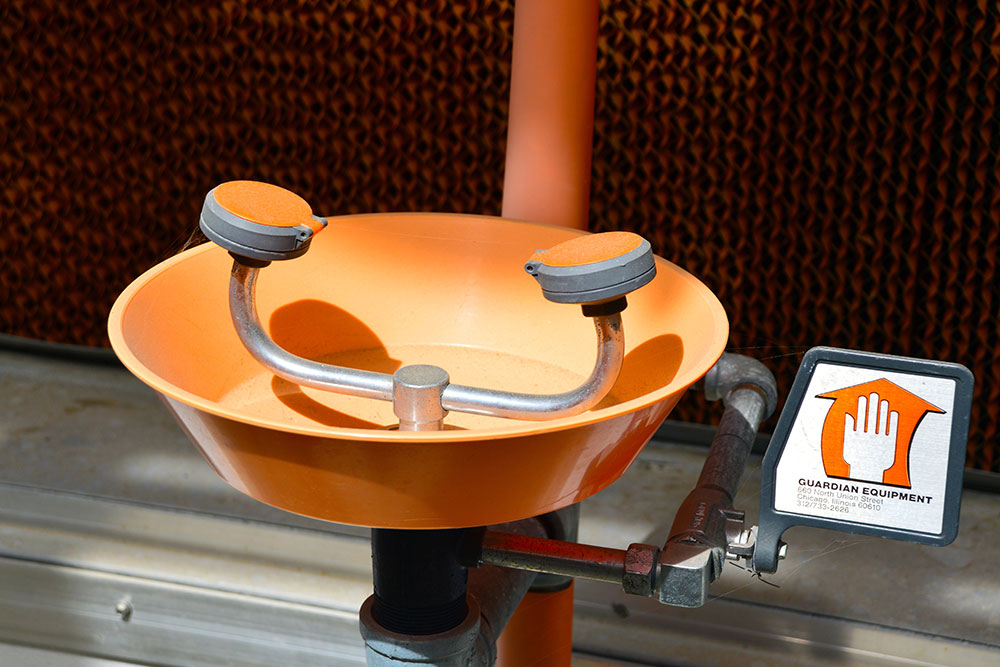 20
Feb
20
Feb
Ensuring Compliance With OSHA Eyewash Requirements In Your Workplace
- 0 Comment(s)
- February 20, 2025
Workplace safety is a priority for any organization, especially when employees work with hazardous materials. Meeting OSHA eyewash requirements is one of the ways to create a safer environment for your team. These regulations are designed to protect workers from eye injuries caused by chemicals, debris, or other hazardous substances. Understanding and implementing these requirements minimizes risks and promotes a culture of safety.
The Importance of OSHA Eyewash Requirements
OSHA mandates eyewash stations in workplaces where employees may be exposed to corrosive, toxic, or hazardous materials. These stations offer immediate relief by flushing harmful substances from the eyes, reducing the risk of long-term damage. Following these requirements not only protects employees but also helps organizations avoid costly penalties and liability issues.
Workplaces handling materials labeled as corrosive, flammable, or irritants often require eyewash stations to meet compliance. Industries such as manufacturing, chemical processing, and construction must pay close attention to these regulations. Incorporating proper eyewash stations demonstrates a commitment to employee safety and builds trust within your team. The presence of these safety features reflects a workplace culture that prioritizes both productivity and well-being, aligning operational goals with safety standards.
Understanding the Placement of Eyewash Stations
Placement plays a key role in making eyewash stations effective. OSHA requires these stations to be located within a 10-second walking distance from areas where hazardous materials are used. This translates to roughly 55 feet for an average person walking at a normal pace.
The path to the station should remain unobstructed at all times to allow quick access during emergencies. Stations should also be installed at an appropriate height, with the nozzles positioned between 33 and 45 inches from the floor. This height ensures accessibility for all employees and simplifies usage during high-stress situations. Visibility is another factor to consider. Employees must be able to locate stations without hesitation, so clear markings and proper lighting are essential. Proper placement reduces response times during emergencies, increasing the likelihood of positive outcomes.
Regular Maintenance of Eyewash Stations
Routine maintenance keeps eyewash stations operational and reliable. OSHA and ANSI standards recommend weekly activation of eyewash stations to confirm water flow and functionality. These tests flush out stagnant water, preventing sediment buildup that could hinder performance.
Annual safety inspections provide a more thorough assessment, ensuring compliance with operational standards. During inspections, confirm that water flows at a consistent temperature between 60 °F and 100 °F and that stations can maintain flow for at least 15 minutes. Documenting these checks helps track performance and provides evidence of compliance during audits or inspections. Well-maintained stations demonstrate a workplace’s dedication to safety, keeping both employees and regulators confident in the systems you’ve implemented.
Training Employees on Eyewash Use
Training employees to use eyewash stations effectively is a vital part of maintaining workplace safety. Workers should know how to locate and operate the stations quickly during emergencies. Training should emphasize the importance of flushing eyes for a full 15 minutes to remove hazardous substances completely.
Employees should also be trained to remove contact lenses before using the station, as lenses can trap harmful materials against the eyes. Incorporating eyewash training into new hire onboarding and conducting regular refreshers keeps employees prepared to act confidently in emergencies. Providing hands-on demonstrations further reinforces these skills and reduces hesitation during critical moments. A well-trained workforce can mean the difference between minor injuries and long-term consequences.
Proper Signage and Accessibility
Clear signage is critical for directing employees to eyewash stations. OSHA requires all stations to be labeled with highly visible signs that include clear symbols or text. These signs should be placed at eye level and positioned in well-lit areas to enhance visibility. Accessibility is just as important. Eyewash stations must remain free from obstructions, such as boxes or equipment, that could delay access during emergencies. Keeping the area clear and well-maintained reinforces the station’s purpose and improves response times in critical situations. By consistently monitoring these factors, you reduce potential hazards and maintain a safe environment that aligns with OSHA standards.
Documenting Inspections and Compliance
Maintaining detailed records of eyewash station inspections is an important step for demonstrating compliance. These records should include dates of inspections, test results, and any corrective actions taken. Proper documentation not only shows that your workplace complies with OSHA requirements but also provides a transparent history of your maintenance efforts. This transparency can be invaluable during audits or safety inspections by regulatory authorities.
Accurate records also help identify recurring issues, allowing you to take proactive steps to resolve them. For example, tracking frequent blockages or sediment buildup in certain stations can inform targeted preventive measures. A well-documented maintenance program supports transparency and keeps your safety measures aligned with regulatory standards. Regular reviews of these records provide opportunities to refine your processes, ensuring continuous improvement in safety practices. Establishing an organized system for record-keeping also reduces administrative burdens, enabling you to respond quickly to inspection requests or internal evaluations.
Partnering With Experts for Eyewash Compliance
Managing eyewash station compliance can be complex, but partnering with professionals simplifies the process. Experts can assess your facility, recommend suitable equipment, and guide you through proper installation and maintenance practices. They bring specialized knowledge to address challenges, such as ensuring stations meet placement requirements or selecting the correct models for your specific needs.
Our services at Yadkin Fire & Safety include the sale, inspection, and maintenance of safety equipment, ensuring your workplace remains secure and well-prepared. We understand the unique challenges different industries face and offer customized solutions that fit your operational requirements. Working with us allows you to focus on your operations while we support your safety efforts with reliable solutions. Our fast turnaround times and tailored advice make us a trusted partner for your workplace needs. With professional support, maintaining OSHA compliance becomes a streamlined and manageable process.
The Role of Individual Eyewash Bottles
In high-risk work areas, providing individual eyewash bottles can serve as an effective first step before reaching an eyewash station. These portable bottles are particularly useful in large facilities or temporary worksites where the distance to a station may exceed the required 10-second access time. Eyewash bottles can be placed near high-hazard zones, offering immediate relief until workers can access a full eyewash station for a complete 15-minute flush. Their lightweight design and portability allow employees to address exposure quickly, minimizing potential harm.
It’s important to educate employees on proper use, emphasizing that these bottles are supplemental and not replacements for a compliant eyewash station. Workers should be trained to use the bottles correctly and understand their limitations. Regular checks of these bottles for expiration dates and adequate fluid levels are also necessary. Keeping track of usage patterns helps determine restocking schedules, ensuring these tools remain available and effective when needed. Integrating eyewash bottles into your safety plan demonstrates attention to detail in protecting employees.
Integrating Eyewash Systems into Workplace Design
When designing or renovating a facility, incorporating eyewash systems into the layout can simplify compliance and improve safety. Working with architects and safety experts during the planning phase ensures that eyewash stations are positioned strategically. Stations should be located near hazardous work zones without disrupting workflow or creating obstructions.
Thoughtful design also considers lighting, visibility, and accessibility, ensuring that employees can quickly locate stations in an emergency. Investing in proper integration during the design phase can save time and reduce the need for retrofitting, creating a more efficient and compliant workplace environment.
Meeting OSHA eyewash requirements is an important step in protecting employees and maintaining workplace safety. Proper placement, regular maintenance, and employee training are key to keeping eyewash stations effective. By following these guidelines and partnering with professionals, you can create a safer environment while ensuring compliance with regulatory standards.
At Yadkin Fire & Safety, we are committed to helping you maintain safety in your workplace. For expert guidance or to learn more about our services, contact us today.

